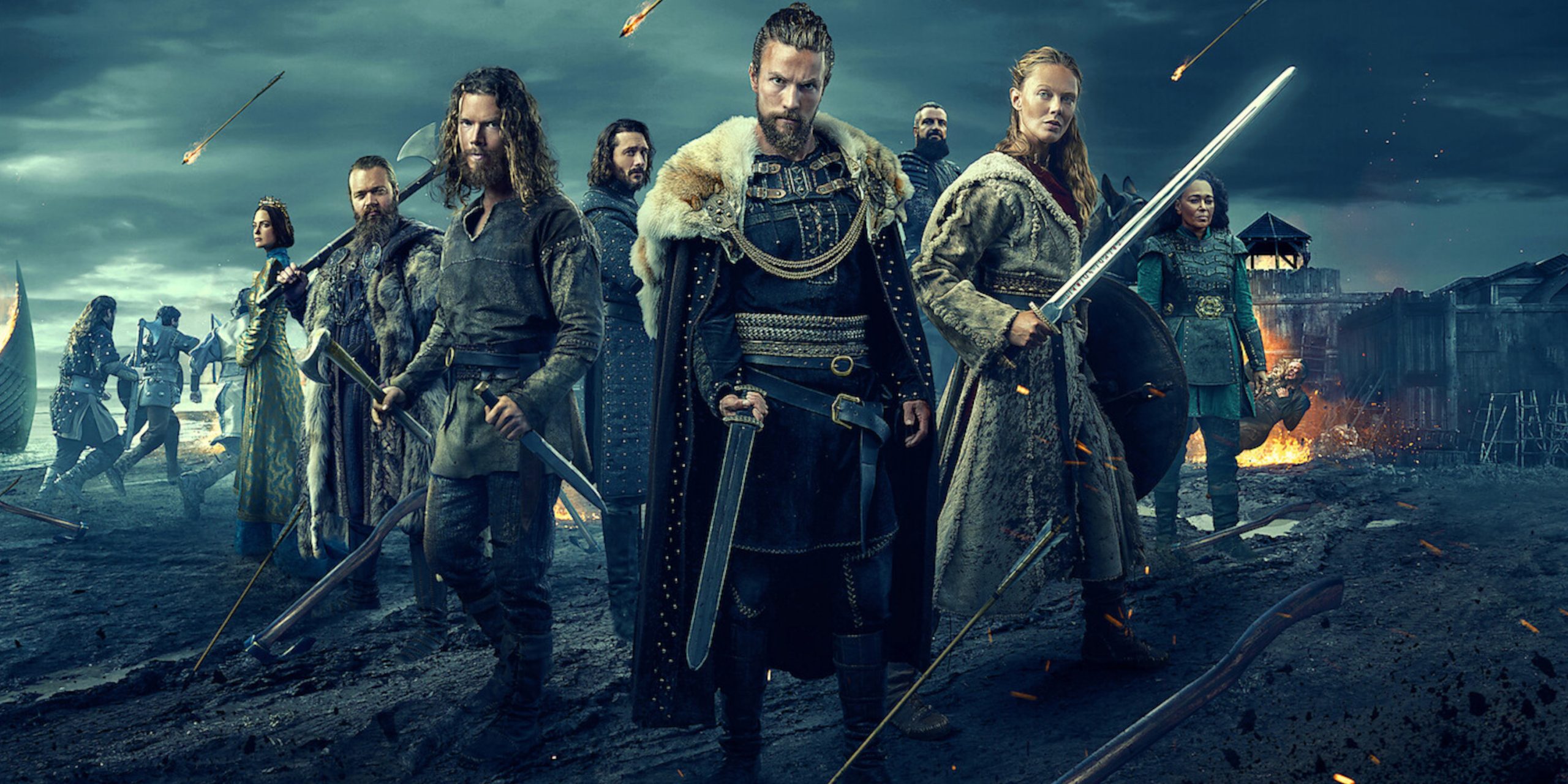
The Vikings: Valhalla series, set in the early 11th century, features an array of historically inspired weapons and armour. While creative liberties are taken for dramatic effect, many of the weapons depicted have real historical counterparts or plausible origins based on archaeological finds. Here are ten of the most notable weapons and armour pieces seen in the series, along with their historical relevance and practical role in Viking warfare.
1. Viking Sword (Type X and Type H variants)
The classic one-handed Viking sword, often of Petersen Type X, appears prominently in Valhalla. These swords had broad, double-edged blades, typically 70–80 cm long. While richly decorated hilts are common in the show, surviving examples suggest these were rare and likely owned by the elite. In combat, the Viking sword was prized for its balance and cutting power, although not ideal for stabbing due to its relatively rounded point.
2. Dane Axe
Often wielded by warriors such as Harald Sigurdsson, the Dane axe is one of the most striking weapons on screen. It features a long haft, usually around 1.2 to 1.8 metres, with a wide, thin-bladed axe head. Originally associated with elite warriors like the Jomsvikings or housecarls, the Dane axe was designed for powerful overhead strikes capable of cutting through shields, mail, and even helmets.
3. Seax (Scramasax)
The seax, a single-edged knife or short sword, was commonly carried by Norsemen. In the series, it is often seen used in close combat or as a secondary weapon. Historically, the seax varied in size and served as both a tool and a weapon. The broader, longer varieties resemble short swords and were deadly in grappling situations.
4. Viking Shield
Round shields, often painted or bearing symbols, are a staple of Viking warfare and screen depiction. Most had a wooden core with leather or rawhide edging, and a central iron boss to protect the hand. Shields were light enough for active defence, allowing for parrying, pushing, and the famous ‘shield wall’ formation. While Valhalla sometimes exaggerates their offensive use, their defensive role was paramount.
5. Spangenhelm Helmets
The show often depicts conical helmets with nasal guards, closely resembling the spangenhelm style common in the Viking Age. These helmets were constructed from iron strips and plates, offering solid protection while being relatively light. Full-face helmets, like the Gjermundbu helm, were rare and mostly reserved for high-status warriors.
6. Mail Hauberk
Several characters, particularly nobles and elite fighters, wear mail shirts or hauberks. This armour consisted of thousands of interlinked iron rings, offering excellent protection against slashes and thrusts while retaining mobility. Though costly and heavy, mail was widely used among wealthier Vikings and their mercenary kin.
7. Throwing Spears (Frakka)
Spears were the most common weapon among Viking warriors due to their practicality and affordability. Valhalla features both throwing and thrusting types, often used alongside shields. The frakka (or frakka-type spear) had a leaf-shaped blade and was balanced for throwing at short to mid-range, though the show leans heavily into stylised combat.
8. Hand Axes
Short-handled axes are seen frequently in the hands of common soldiers and raiders. Unlike the Dane axe, these one-handed weapons were used both in combat and daily life. The bearded axe variant, with an extended lower blade, allowed for hooking an enemy’s shield or weapon.
9. Leather Armour and Gambesons
Many foot soldiers in Valhalla are seen wearing leather tunics or padded clothing, sometimes reinforced with studs or scales. While not as protective as mail, gambesons (padded linen or wool jackets) provided shock absorption and were widely used across early medieval Europe. Leather armour is more debatable historically but not entirely implausible in some forms.
10. Archery Equipment (Shortbows and Arrows)
Though not the Viking’s primary battlefield weapon, bows are shown in sieges and skirmishes throughout Valhalla. Typically, these would have been short to medium-length self-bows made of yew, ash, or elm. Arrows had iron heads and were used for hunting as well as combat, especially from ships or during assaults on fortifications.
While Vikings: Valhalla employs a cinematic approach to Viking warfare, much of what it shows draws from authentic finds and textual references. The weapons and armour featured reflect a culture that blended practicality with status, where even a simple axe or spear could become a symbol of both violence and honour.




